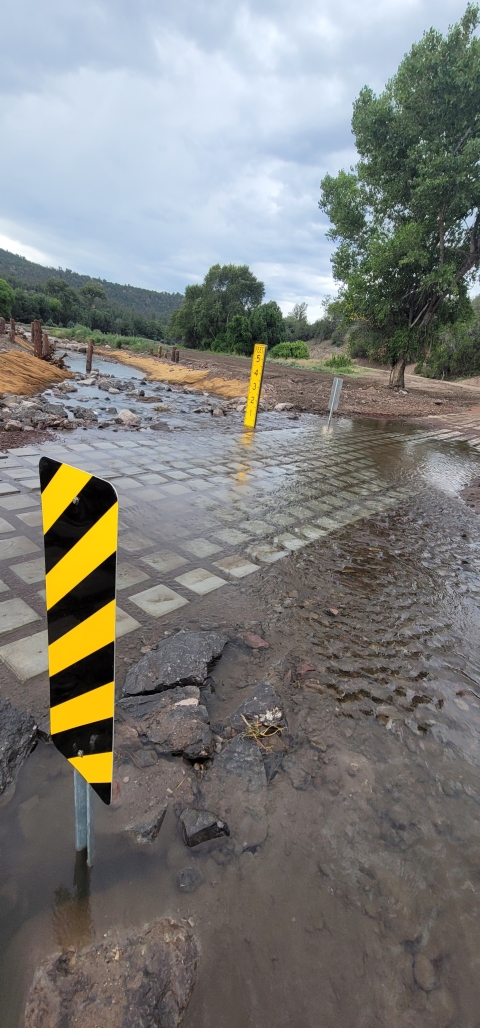The Gila National Forest Fish Passage Project will improve six low-water crossings and decommission 2 crossings on Motorized Trail 63 in the Gila National Forest. The project will also install a culvert below Colyer Spring, a perennial water source which has been impacted from a trail crossing downstream. The improved infrastructure will reduce damage to critical habitat and allow for passage of aquatic organisms while preserving vehicular access to public land and improving water quality within the watershed. The project will also replace or improve a low water crossing of the Tularosa River on Forest Road 233. The existing infrastructure has created a migration barrier for fish and tadpoles as well as degraded aquatic habitat downstream. These projects are a priority for the Gila National Forest and will provide a direct benefit to the federally endangered Loach Minnow and its designated critical habitat.
Quick Facts:
| Project Status | Active |
| Location | NM, Catron |
| NFPP Project Funding | $430,740 |
| Restoration Techniques | Culvert installation, low water crossing replacement, low water crossing improvement |
| Accomplishments | 21.6 Stream Miles Reopened |
| Project Partner Lead | Gila National Forest |
| Primary Species Benefited | Loach Minnow |
The National Fish Passage Program combines technical expertise with a track record of success.
Implemented primarily through the Service's Fish and Wildlife Conservation Offices, the National Fish Passage Program provides financial and technical assistance to partners across the country. Since 1999, the program has worked with over 2,000 local communities, Tribes, and private landowners to remove or bypass over 3,400 barriers to fish passage fish passage
Fish passage is the ability of fish or other aquatic species to move freely throughout their life to find food, reproduce, and complete their natural migration cycles. Millions of barriers to fish passage across the country are fragmenting habitat and leading to species declines. The U.S. Fish and Wildlife Service's National Fish Passage Program is working to reconnect watersheds to benefit both wildlife and people.
Learn more about fish passage and reopen access to over 61,000 miles of upstream habitat for fish and other animals. Staff have expertise in fish migration and biology as well as financial, engineering, and planning assistance to communities, Tribes, and landowners to help them remove barriers and restore rivers for the benefit both fish and people.
Fish passage project proposals can be initiated by any individual, organization, government, or agency. However, proposals must be submitted and completed in cooperation with a Fish and Wildlife Conservation Office. (Please note that fish passage projects being used for federal or state compensatory mitigation or required by existing federal or state regulatory programs are not eligible for funding through the National Fish Passage Program.)
CONTACT A FISH PASSAGE COORDINATOR IN YOUR AREA TO GET STARTED.



